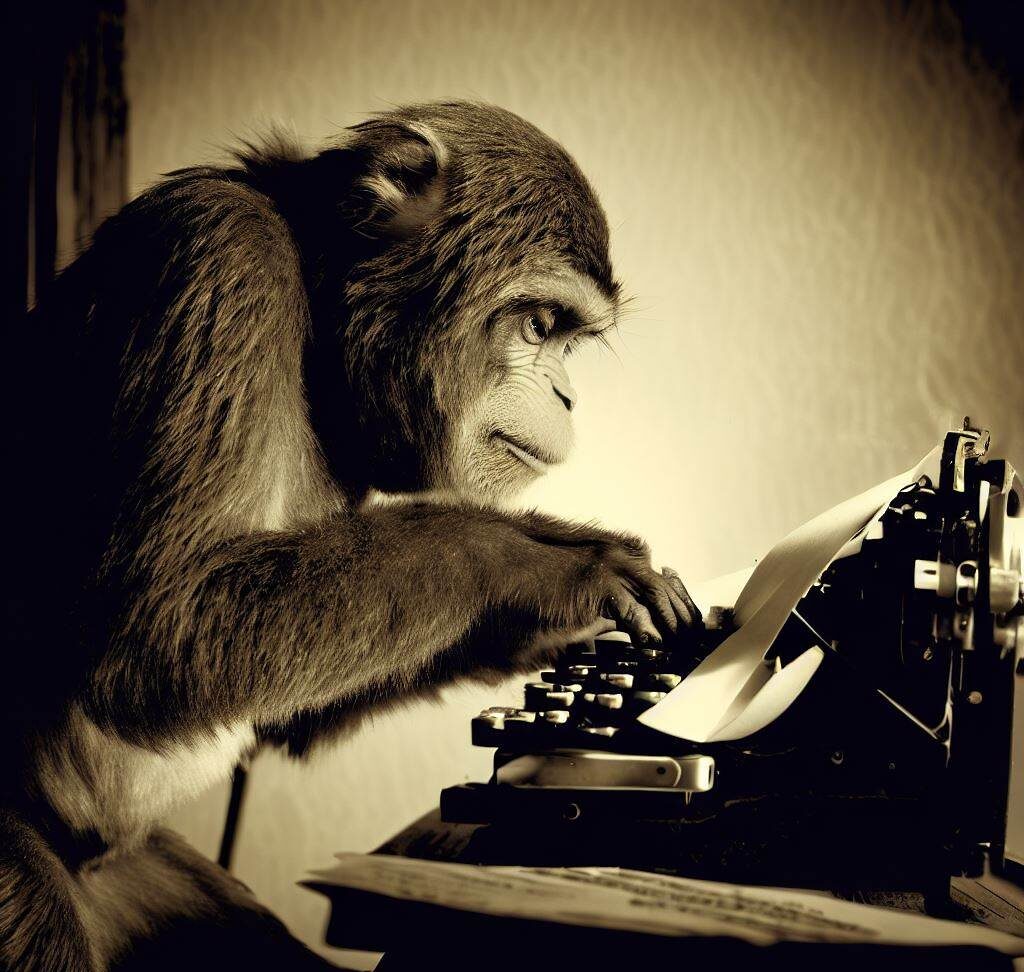Ever heard the saying that a thousand monkeys typing at a thousand typewriters for a thousand years will eventually type out the entire works of Shakespeare? Well, the odds are astronomical, but there’s something captivating about the idea, isn’t it? This is the essence of the Infinite Monkey Theorem.
Picture a room teeming with monkeys—like the business end of a very peculiar typing pool, each one plunking away at a keyboard with fervor. There’s something poetic about the chaos, a sort of literary Russian Roulette, waiting for that moment when, against all odds, “To be or not to be” appears on the page.
Dancing on the Edge of Infinity
The heart of the Infinite Monkey Theorem isn’t about simians or typewriters. It’s about probability, the mathematical muse of chance and randomness. The idea is that given infinite time, even events with astronomically low probabilities will happen eventually. It’s not a prediction, per se, but a flirtation with the concept of infinity—a capricious dance along the precipice of unending time.
You see, when we humans imagine infinity, we tend to picture a never-ending straight line. But, mathematically speaking, infinity isn’t that straightforward. It’s more like a bottomless, topless, boundary-less cosmic container where our usual conception of rules and odds just don’t apply in the same way.
Probability, Improbability, and Monkey Business
Of course, the image of monkeys typing Shakespearean sonnets is far-fetched—wildly entertaining, but not a scenario we’re likely to encounter. Even so, it’s a metaphor that can help us make sense of extreme improbability and the idea of random sequences in infinite time.
When you factor in the number of keys on a typewriter (let’s say around 50 to include letters, numbers, punctuation, and spaces) and the length of the average word, the chance of a monkey randomly typing the word “banana” is approximately one in 15 billion. To randomly type out something as long as “Hamlet”? Well, let’s just say you’re more likely to win the lottery. Several times.
This isn’t to discredit our furry typists. Rather, it’s to highlight that with each keystroke, there’s an almost infinite number of combinations possible. Each one is a roll of the dice, a dance with Lady Luck. And with infinite time? Every possibility takes the stage, no matter how improbable.
No End to the Possibilities
Let’s indulge in this idea further. The longer our monkeys type, the closer they get to typing out the complete works of Shakespeare, correct? Not necessarily. They could, in theory, type out the phrase “All work and no play makes Jack a dull boy” ad infinitum. Infinite time doesn’t guarantee progress—it merely allows for the possibility.
Yet, the possibility is there. And that’s what makes the Infinite Monkey Theorem so enticing, despite its improbability. It’s a testament to our fascination with the unlikely, our innate desire to explore the bounds of what’s possible.
From Monkeys to Modern Times
Fast forward to today, the era of machine learning and big data. The Infinite Monkey Theorem has taken on new relevance as we grapple with algorithms that generate random strings of data. Given enough time, could they, too, write the complete works of Shakespeare? Or craft an article about the Infinite Monkey Theorem, perhaps?
On the surface, it sounds preposterous. But beneath the seemingly chaotic flurry of digits and algorithms, there’s a whisper of possibility. With infinite time, who knows what could happen?
At the end of the day, the Infinite Monkey Theorem reminds us of the unpredictable, the improbable, and the infinite. Whether we’re talking about monkeys at typewriters, AI-generated articles, or the vast cosmos itself, it reminds us that in the realm of infinity, there’s always room for a little monkey business.

